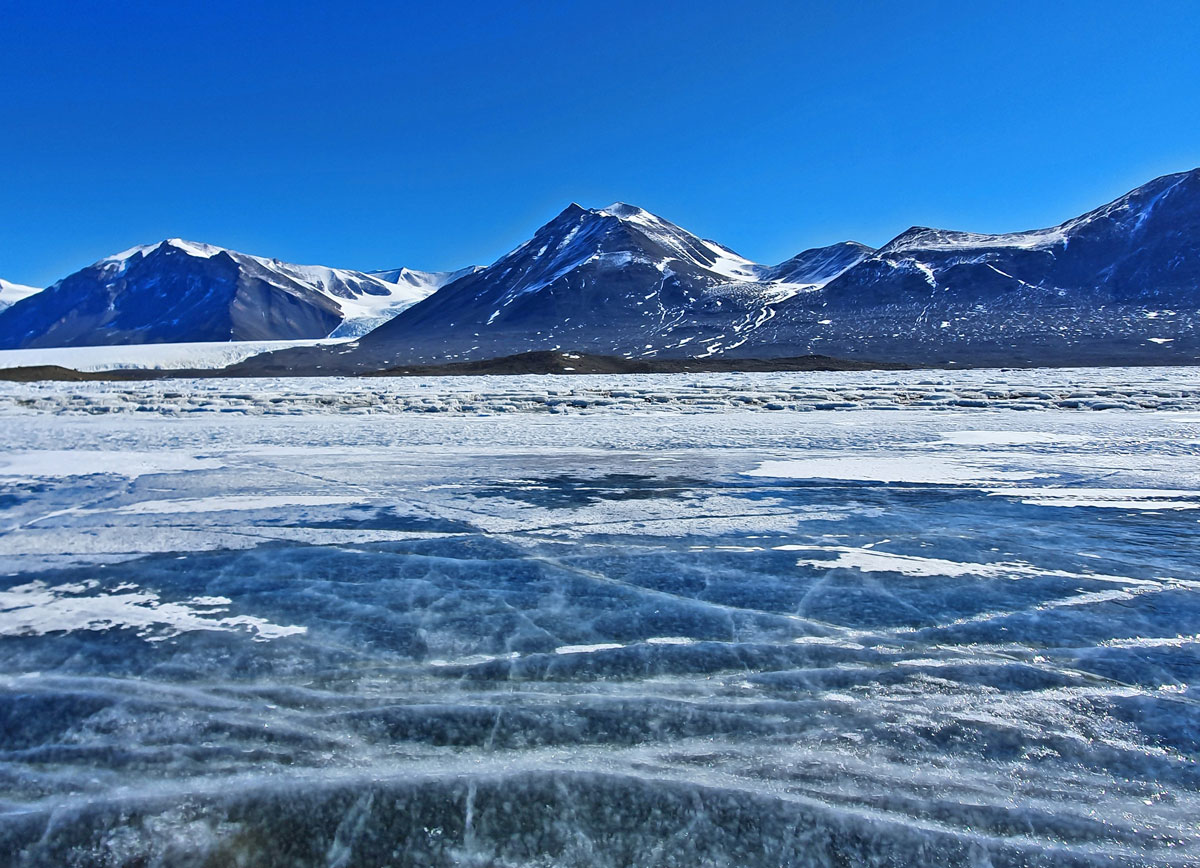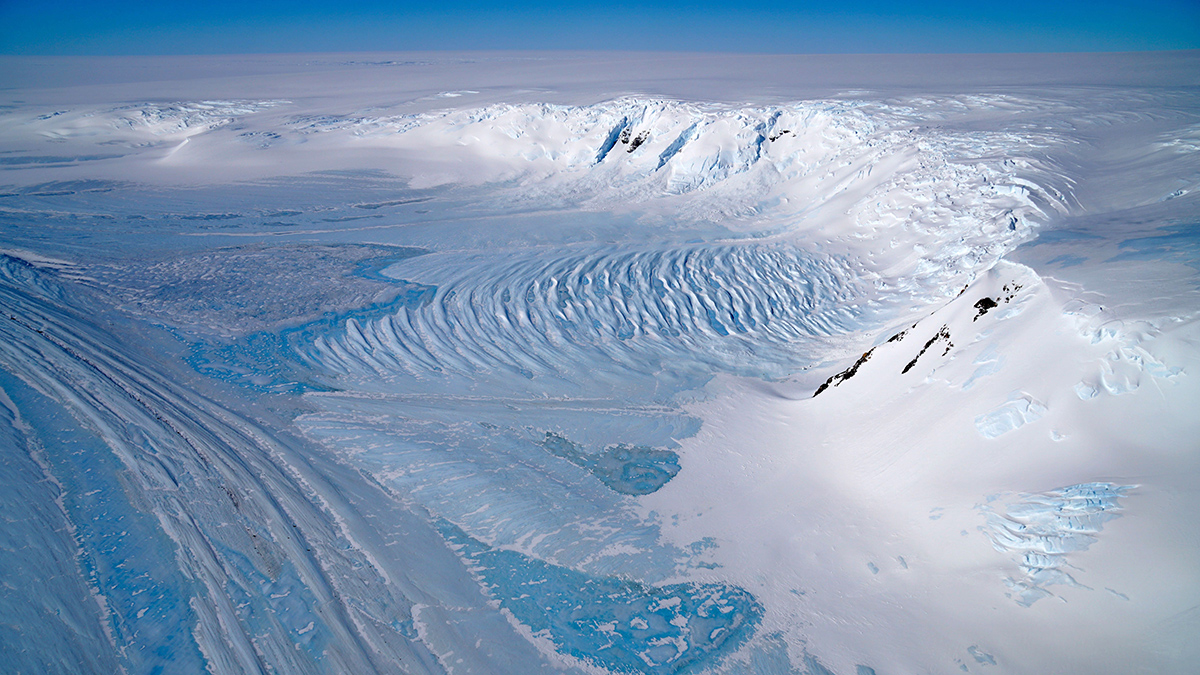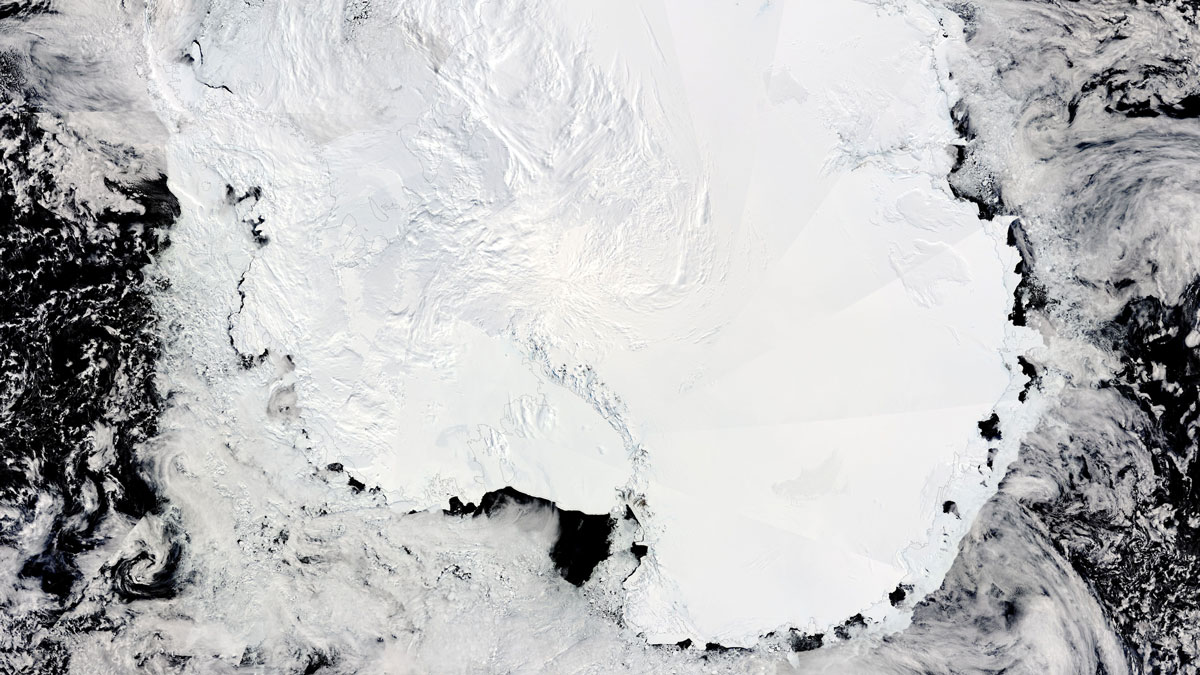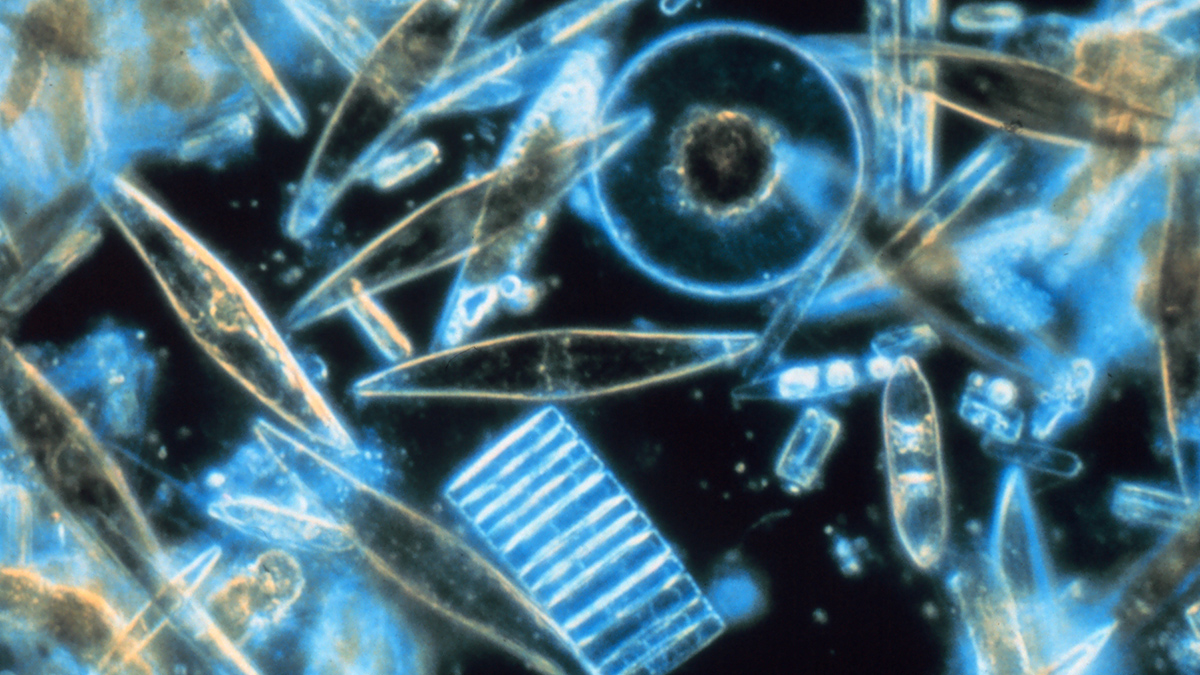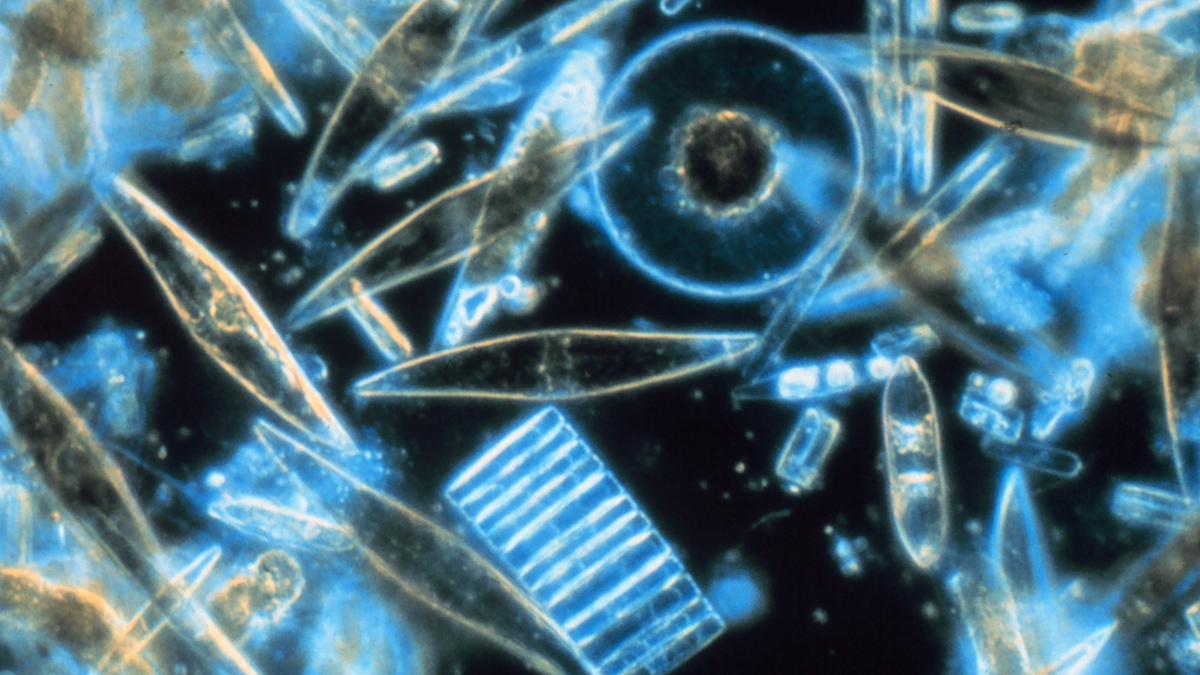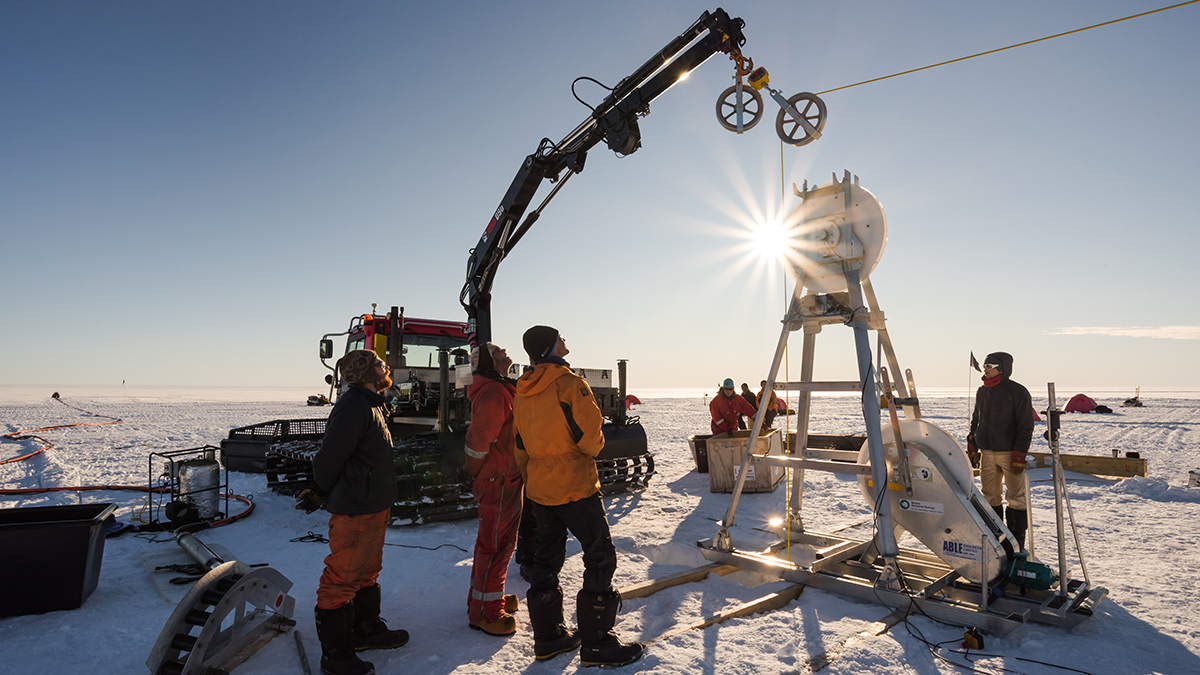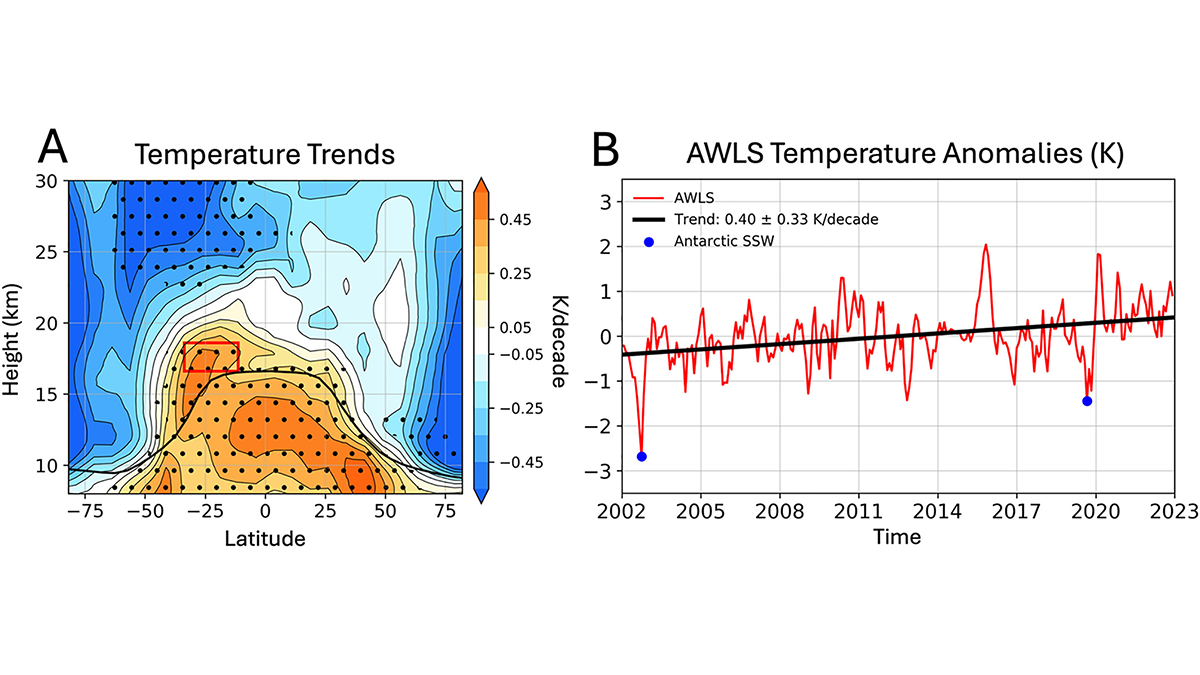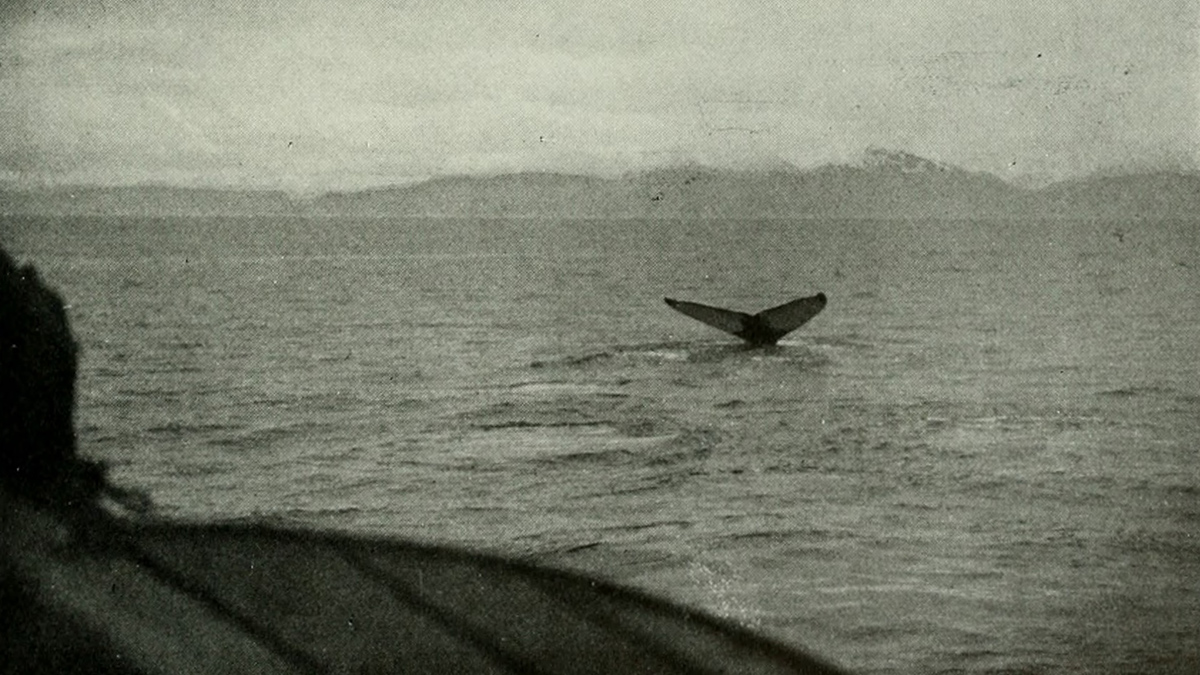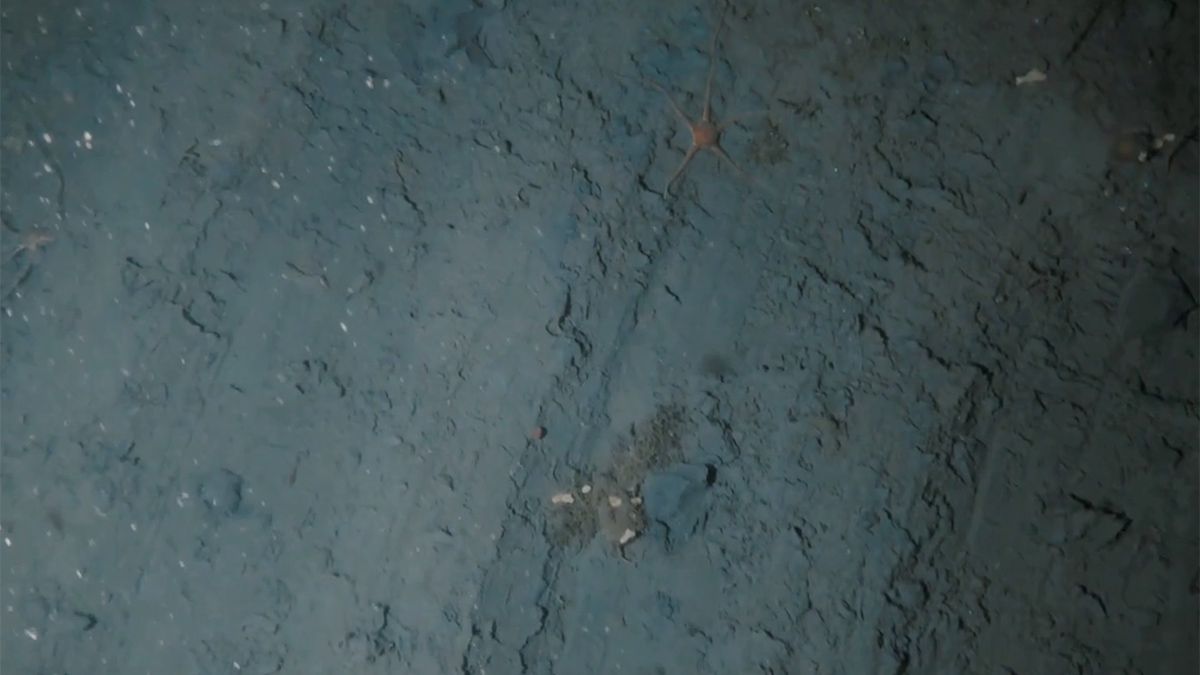Seismic surveys hint at the extent of a potential groundwater system in the White Continent.
Antarctica
New Lessons from Old Ice: How We Understand Past (and Future) Heating
Fragments of blue ice up to 6 million years old—the oldest ever found—offer key insights into Earth’s warming cycles. Researchers are using these ancient data to refine models of our future climate.
Satellite Data Reveal Changing Lakes Under Antarctic Ice
Radar altimetry observations have pinpointed 85 active subglacial lakes, shedding light on how water moves beneath the Antarctic Ice Sheet.
Mysteriously Bright Waters near Antarctica Explained
Shiny-shelled diatoms make a remote part of the Southern Ocean appear especially reflective in satellite imagery.
Strong Tides Speed Melting of Antarctic Ice Shelves
Ocean currents along the underside of the ice are a major control over melting.
Southern Hemisphere Subtropical Lower Stratosphere is Warming
Warming of the Southern Hemisphere (SH) subtropical lower stratosphere is due to slowing of Brewer-Dobson Circulation, thus cooling the Antarctic lower stratosphere and masking anticipated ozone recovery.
Scientists Ask NSF to Keep Only Antarctic Icebreaker Afloat
On 28 July, more than 170 researchers sent a letter to National Science Foundation leaders and Congress, urging them to reconsider the decision to terminate the lease of the Nathaniel B. Palmer, the United States’ only Antarctic research vessel-icebreaker (RVIB) and a key part of science operations around the White Continent.
Whaling Records Can Help Improve Estimates of Sea Ice Extent
The locations of humpback whale catches in the early 20th century indicate that most climate models overestimate the historic extent of sea ice in the Southern Ocean.
Anchoring Is Damaging the Fragile Antarctic Seabed
Scientists call for better protection of Antarctica’s vulnerable seafloor ecosystem as ship traffic increases around the continent.

